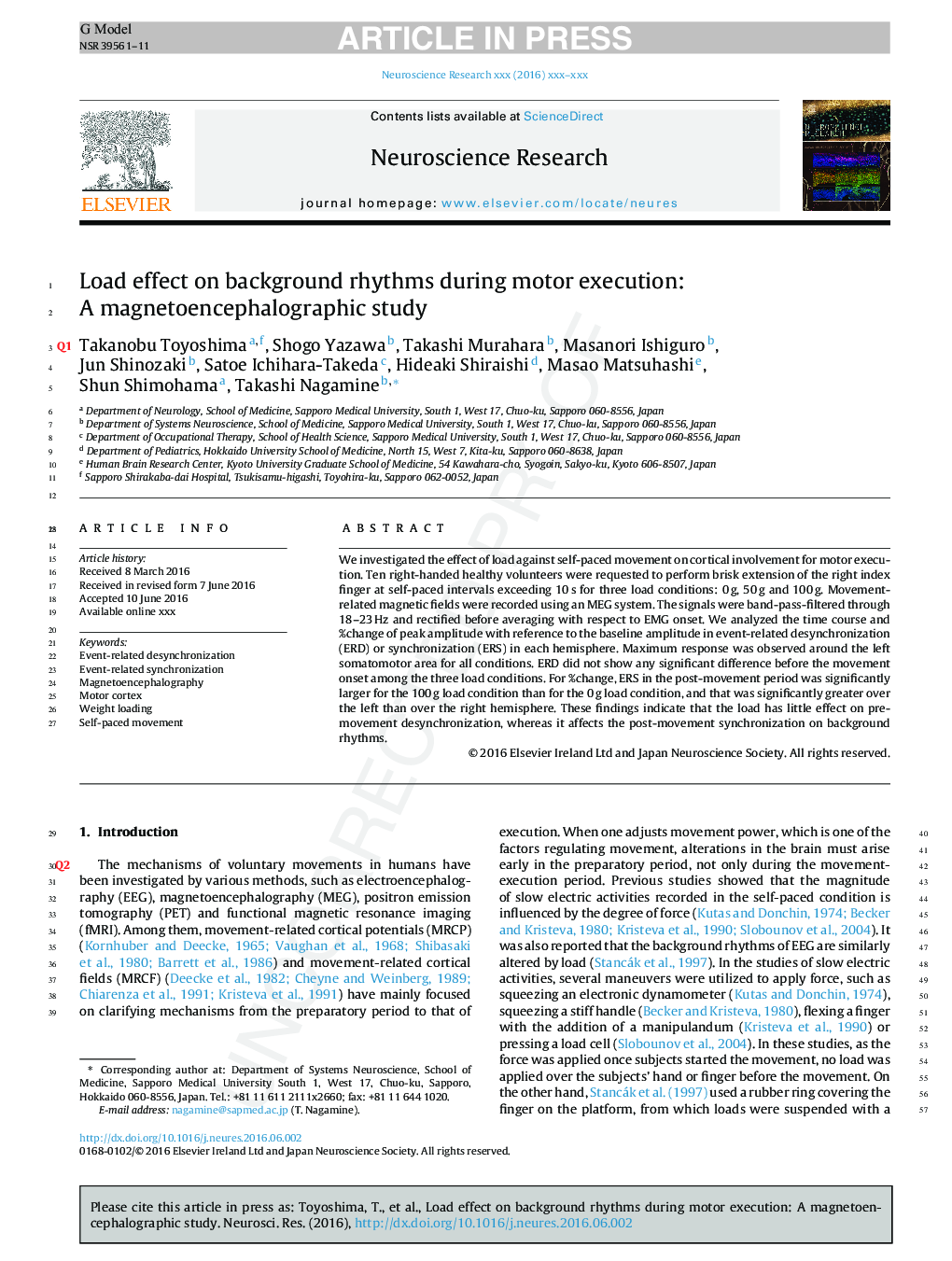| Article ID | Journal | Published Year | Pages | File Type |
|---|---|---|---|---|
| 5738959 | Neuroscience Research | 2016 | 11 Pages |
Abstract
We investigated the effect of load against self-paced movement on cortical involvement for motor execution. Ten right-handed healthy volunteers were requested to perform brisk extension of the right index finger at self-paced intervals exceeding 10Â s for three load conditions: 0Â g, 50Â g and 100Â g. Movement-related magnetic fields were recorded using an MEG system. The signals were band-pass-filtered through 18-23Â Hz and rectified before averaging with respect to EMG onset. We analyzed the time course and %change of peak amplitude with reference to the baseline amplitude in event-related desynchronization (ERD) or synchronization (ERS) in each hemisphere. Maximum response was observed around the left somatomotor area for all conditions. ERD did not show any significant difference before the movement onset among the three load conditions. For %change, ERS in the post-movement period was significantly larger for the 100Â g load condition than for the 0Â g load condition, and that was significantly greater over the left than over the right hemisphere. These findings indicate that the load has little effect on pre-movement desynchronization, whereas it affects the post-movement synchronization on background rhythms.
Keywords
Related Topics
Life Sciences
Neuroscience
Neuroscience (General)
Authors
Takanobu Toyoshima, Shogo Yazawa, Takashi Murahara, Masanori Ishiguro, Jun Shinozaki, Satoe Ichihara-Takeda, Hideaki Shiraishi, Masao Matsuhashi, Shun Shimohama, Takashi Nagamine,
